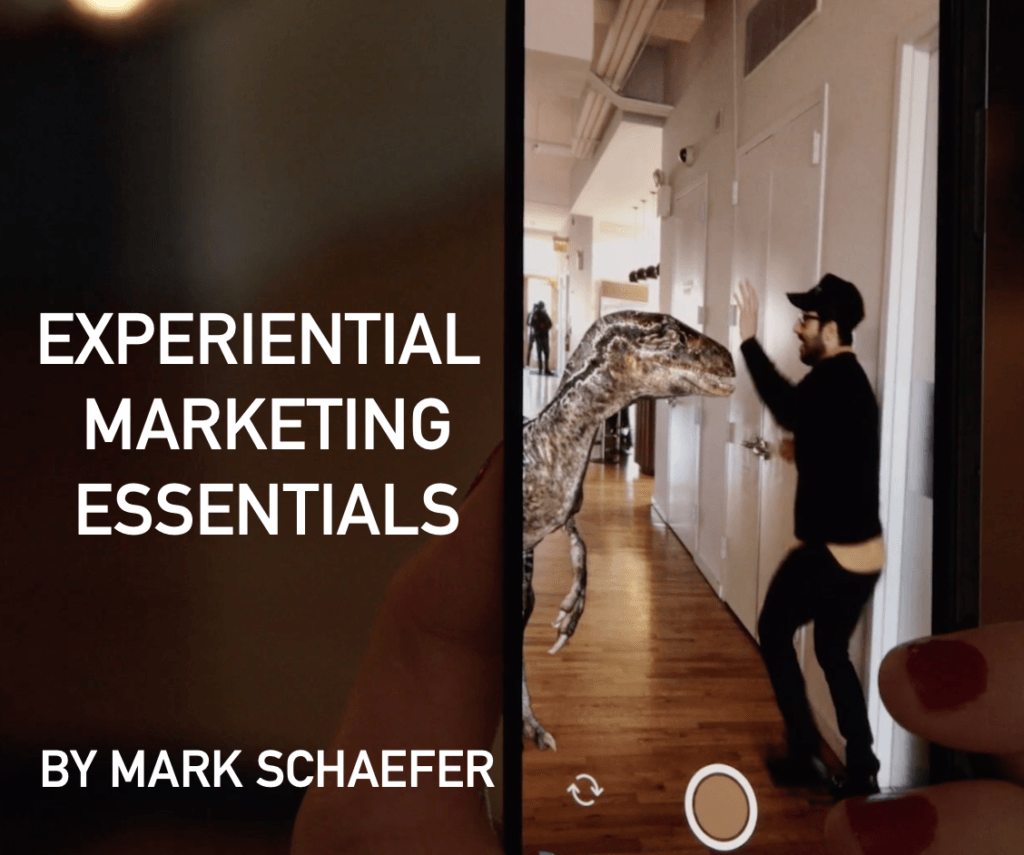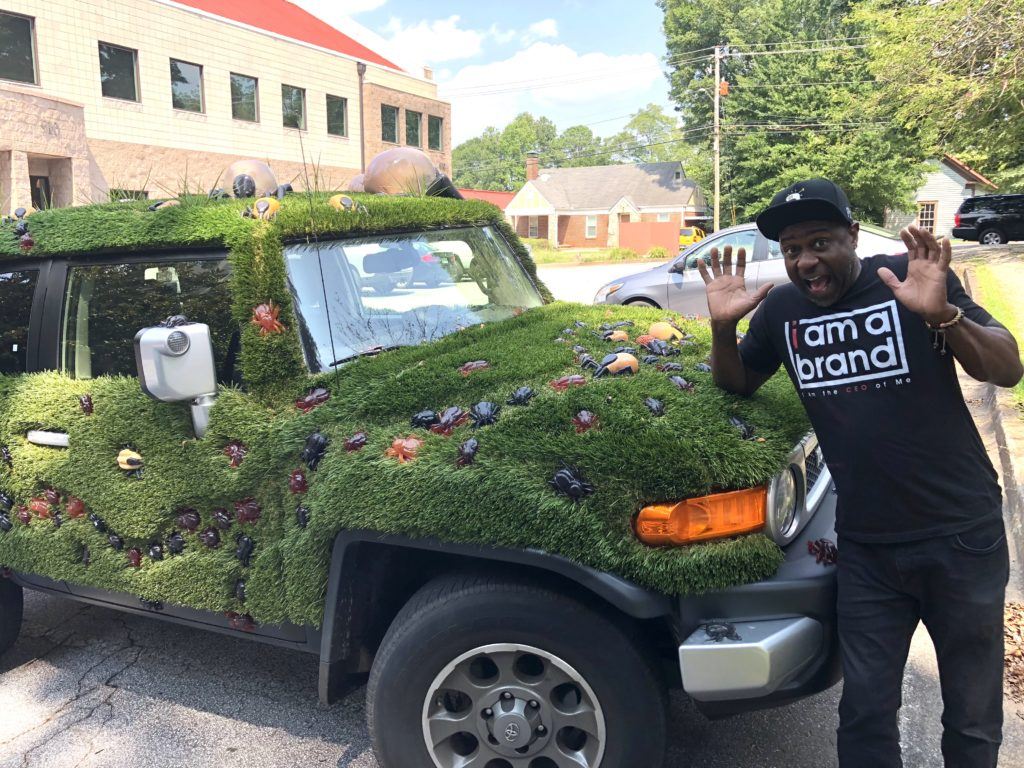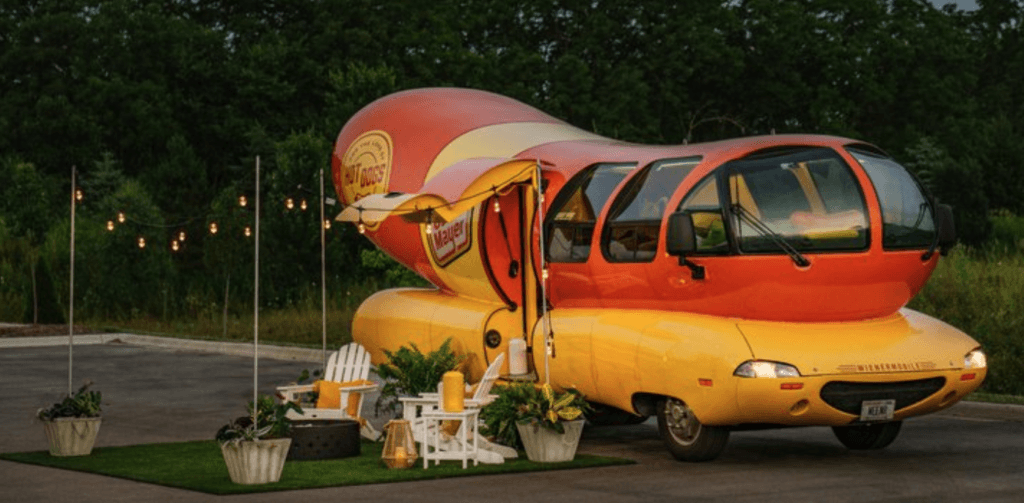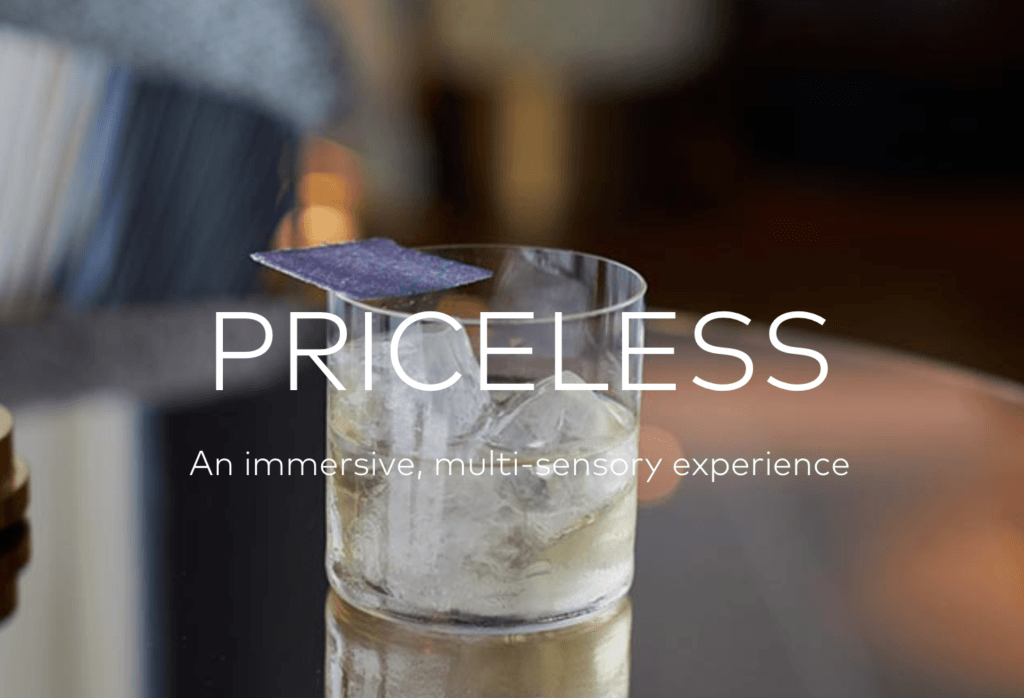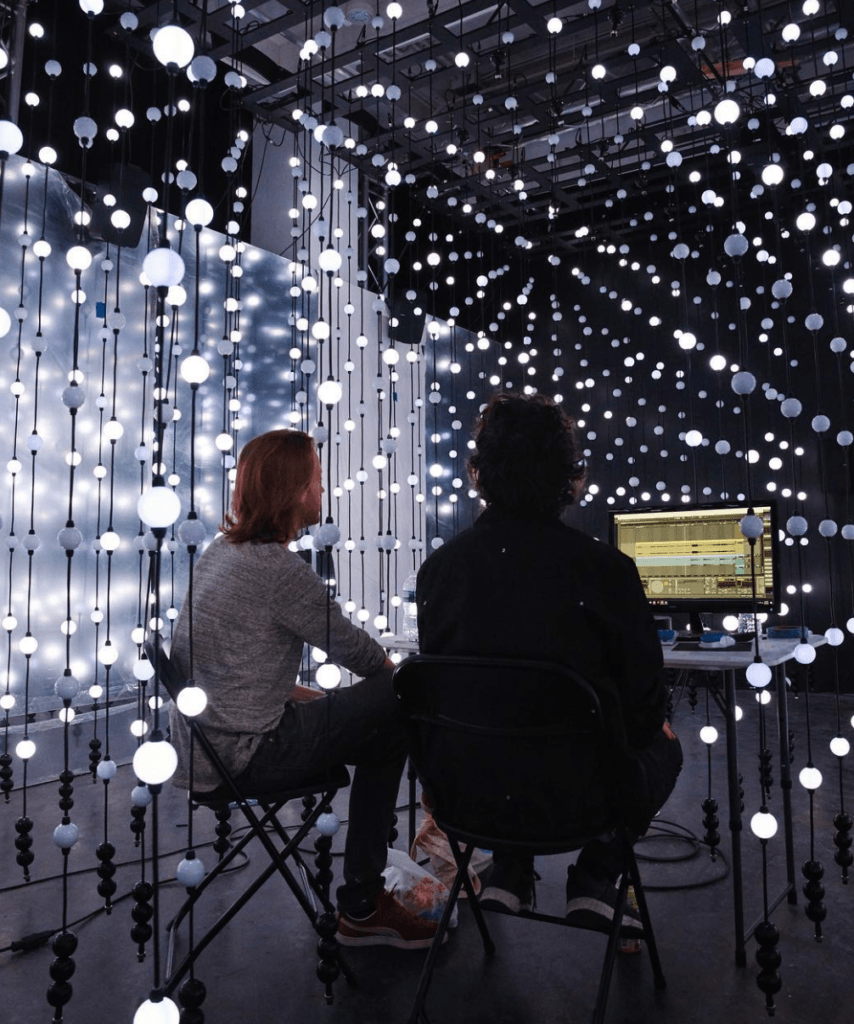Here is one of the most poignant news items from the recent Cannes Lions Festival, an annual gathering of brands, creatives, and advertisers: Agencies were imploring streaming service Netflix to start showing ads.
A sign of the desperate times for brands!
Due to streaming content options and other generational dynamics, people don’t see ads like they use to, and if they don’t block them or skip them, they don’t believe them.
To succeed in the future, we need to re-imagine marketing by weaning ourselves from traditional methods that don’t work any more and put the customer in control. The customer is the marketer.
User-generated content (UGC) is one of the most effective ways to get our story told — and believed — among our audiences.
And that brings us to the growing importance of experiential marketing.
Four “whys” of experiential marketing
More than 20 years ago, B. Joseph Pine and James Gilmore wrote a Harvard Business Review article predicting the rise of the “experience economy.” They argued that a newly competitive battleground was emerging around delivering experiences to customers, the next evolution in marketing.
Brands are starting to acknowledge this, signified in Gartner’s new CMO Spend Survey, which lists “experience” among the top three brand investments.
Four shifts are occurring today that make experiential marketing an essential consideration for your arsenal:
1) It’s what everybody wants.
There has been a lot of press about how millennials and Gen Z consumers are less focused on buying “things” and prefer experiences. But that also applies to generations age 50 and over, where an attitudinal shift away from accumulating “stuff” to an overwhelming desire to focus on experiences demonstrates that this is a broad consumer mega-trend.
Everybody wants cool experiences!
2) It’s the best way to share your story.
As I document in my book Marketing Rebellion: The Most Human Company Wins, two-thirds of our marketing is occurring without us. The challenge for marketers today is to get invited to those conversations by giving our customers something insanely cool to talk about! And yes, even B2B marketers get the most results with face-to-face events.
In some examples, like the case study I have below from audio company Sonos, a live experience may be the only way to effectively tell a brand story.
3) The bar is lower than ever
In this post I discuss some favorite experiential marketing examples from the past two years — and they are pretty creative! But creating meaningful experiences doesn’t have to be Hollywood or particularly expensive.
Digital natives (hey, they are in their 40s now!) are not as fixated with human interaction and are relatively content with online experiences, too. The experience economy has moved beyond “making memories” to creating inspired and seamless experiences, on screen and beyond.
Experiential marketing is within reach of any company willing to pay close attention to their customers.
4) Technology makes it easy to share experiences
The power has shifted from brands and advertisers to consumers and social media. Today it is easier than ever for customers to create and share content about favorite products and services. And people LOVE to share their experiences.
Experiential marketing case studies
Here is a variety of interesting experiential marketing examples that caught my attention over the past few months.
1) Don’t bug me man
How do you spread a story about the dangers of Lyme Disease?
Due to global warming, there has been an explosion in the number of ticks, a small, blood-sucking bug that spreads this disease by attaching itself to a host (like you!)
FIZZ, an amazing word of mouth marketing agency in Atlanta, was up to the challenge. They created this over-the-top vehicle to promote conversations about a test for the disease:
By covering this SUV with realistic grass and a variety of rubber ticks, this activation stopped people in their tracks.
The visually powerful message — accompanied by trained marketers ready to talk about it — created constant conversations and story-sharing opportunities.The activation prompted questions, immersing people in an authentic, interesting, and relevant brand story.
FIZZ took the experience to the customers. They drove the bug car to outdoor events and other locations where there were crowds of people who were naturally interested in outdoor activities.
FIZZ even saw people pulling off the road to photograph the car wherever it was parked, creating measurable buzz for an otherwise boring product idea.
2) Wiener genius
How do you make hotdogs hip? Mash it up with a culturally-relevant startup like Airbnb.
Oscar Mayer’s Wienermobile was available on Airbnb in Chicago to coincide with the popular Lollapalooza musical festival. The Kraft Heinz brand has turned the iconic hot dog-themed vehicle into an Airbnb campsite leading up to the event.
Airbnb users can book a one-night stay and the vehicle sleeps two people. I assure you the purpose of this was not to gain rental income for a hot dog company — every person passing the site will take a picture and share the story!
3) Hey cowboy!
One of my favorite experiential marketing examples is the Westworld activation I profiled here:
If you can’t see the video, view it here on YouTube: Giant Spoon
Experiential agency Giant Spoon took over a two-acre ghost town outside Austin, TX during the annual SXSW festival of global thought leaders to recreate the famous set from the hit television series WestWorld.
Features of the “set” included:
- A pre-experience meet-up in Austin that included elements of the television show.
- An “initializing experience” similar to the TV show where you walk through a portal to the gritty reality of Westworld.
- Opportunities to stroll through familiar scenes from the TV series including The Mariposa Saloon.
- Western-style food, drinks and entertainment.
- Dozens of actors, in character, playing the android hosts who challenged you, flirted with you, and invited you into their stories.
- Secret “easter eggs” that opened up new experiences.
- Story lines that actively engaged the guests. For example, I had a personalized letter waiting for me at the Westworld post office from one of the characters. She had a desperate message to tell me — but I had to find her (Which I did. She needed my help starting a suffragette movement).
- Lots of action all around you. The “hosts” were fighting, gambling, and inviting you into their “stories.” A fellow guest was more than a bit spooked when a cowboy ran up to him and told him to hide because the sheriff was coming for him.
Sponsor HBO had a stated goal: “Win” the SXSW buzz. And with hundreds of thousands impressions, stories and even mainstream media coverage, they certainly did.
4) Me and my raptor
As I mentioned, an experience doesn’t even have to be in-person. You can bring an immersive experience to the customer through technology. One company even brought a dinosaur to your doorstep, as you can see in this video:
Jurassic World: Facebook AR Effects from The Mill on Vimeo.
In anticipation of the release of the latest Jurassic Park movie, digital agency The Mill created an opportunity for fans to share the screen with a terrifying prehistoric beast. The resulting campaign —directing users to a Facebook filter that inserted a raptor into photos and video — was nominated for a 2019 Webby Award in the category of Augmented Reality.
The Mill doesn’t have access to analytics as to the success of the campaign, but the Facebook filter has been used more than 1 million times. Universal Studios was impressed with The Mill’s work and contracted them to create another AR experience tied to the film’s DVD release — the agency constructed cut-outs of Blue (the movie raptor) for Walmart stores to prop next to their DVD displays. When users scanned these images, the dinosaur leapt to life on their phones.
5) Priceless experiences
Mastercard has the been on the forefront of marketing innovations for more than a decade and you don’t have to look any further for a great experiential marketing example.
Mastercard is launching a permanent international culinary collective called Priceless in New York City. The showcase features “immersive, multi-sensory experiences” imitating famous restaurants from around the world.
The first three to take up residency are The Rock from Zanzibar; Teruzushi from Japan; and Lyaness from London. Additionally, a “global food experience” curated by Chef JJ Johnson will be available. The experiences can only be booked by Mastercard cardholders.
The concept recreates the look and ambiance of the featured restaurants — for example, the sound of Teruzushi chef Takayoshi Watanabe’s sword blades, or the roll of the Indian Ocean from The Rock — while emphasizing sonic branding Mastercard introduced earlier this year.
6. Please hack me
IKEA is a place to shop for solid, attractive “starter” furniture. In the hands of young consumers, the products were constantly “hacked” in creative ways.
For years, the brand resisted this idea. What traditional marketer would want their product to be mashed-up and twisted around in a way that was “off brand?”
Thankfully, IKEA has relented and is going with the flow. They are now celebrating the crazy and creative ways customers are hacking their products.
Is this really experiential marketing? I decided that it is. Customers are immersed in a brand experience and telling the world about it as a leading marketing tactic. A different angle on the experiential marketing topic, but I like it. Customers are creating the brand experience!
7. When it needs to be live
Audio speakers are a product hard to market online, which is why Sonos Home Sound Systems chose a live experience to promote its new integration with Google Assistant.
In order to show off the brilliance of Sonos sound, the brand created a three-day pop-up experience in New York, complete with three different rooms for performing artists.
The concept didn’t just involve blasting loud music. One room was designed to demonstrate the physics of sound, by matching sounds in time with light bulbs dangling from the ceiling. The other two rooms were designed to show both the structure and emotion of music. One involved different parts of a song being played from different speakers, and the other displayed digital data visualizations of visitors’ brain waves when listening to a song.
These are all imaginative ideas to immerse customers in the story of sound in a way that makes them want to carry it forward to their friends.
Experiential marketing and you
In this post I wanted to inspire you to think differently about your own marketing through this wide variety of examples.
We live in a world where the battle for exposure and awareness is furious and unrelenting Creating a memorable customer experience doesn’t have to be complicated and elaborate. But there are a few common best practices.
There are three essential elements to a great experiential marketing project, and there are no shortcuts (you need all of them!):
- Tailor the experience to what you know will delight your customers. Brand experiences must be relevant, and they can only be relevant if brands know what makes customers tick (so get out of the office and visit them!).
- Don’t create experiences that are so far-out that consumers don’t know what you stand for. Connect the fun to the promise of the brand. Experiential marketing often has an element of education to it.
- Create an experience that is mutually beneficial (often solidified through establishing an emotional connection). Activities that are gratuitous – like exchanging T-shirts for contact info or freebies in a spin wheel game – establish no stickiness, relevance, or value to the relationship. That’s a transaction, not an experience. In a world where the customer is the marketer, creating a fun and meaningful experience that can get them talking is a timeless strategy for almost any business.
Are you ready to try experiential marketing in your business? Do you have any favorite case studies?
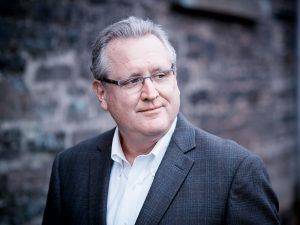 Mark Schaefer is the chief blogger for this site, executive director of Schaefer Marketing Solutions, and the author of several best-selling digital marketing books. He is an acclaimed keynote speaker, college educator, and business consultant. The Marketing Companion podcast is among the top business podcasts in the world. Contact Mark to have him speak to your company event or conference soon.
Mark Schaefer is the chief blogger for this site, executive director of Schaefer Marketing Solutions, and the author of several best-selling digital marketing books. He is an acclaimed keynote speaker, college educator, and business consultant. The Marketing Companion podcast is among the top business podcasts in the world. Contact Mark to have him speak to your company event or conference soon.
